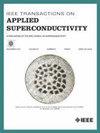On the Evaluation of Current Sharing Temperature Within Conductors of ITER Toroidal Field Coils in Operation
IF 1.7
3区 物理与天体物理
Q3 ENGINEERING, ELECTRICAL & ELECTRONIC
引用次数: 0
Abstract
The nineteen ITER Toroidal Field (TF) coils (including a spare one) consists of seven double pancakes (DP) of cable-in-conduit conductors (CICC), each containing 900 superconducting Nb3Sn strands. In total eight strand manufacturing companies were involved, either relying on the bronze route or internal tin process. As a result, the strand, and thus conductor, performance can vary significantly within the same TF coil. This peculiarity inherent to the ITER project makes the evaluation process of coils stability, linked to the current sharing temperature (Tcs), more delicate. Following an extensive conductor testing campaign carried out over several years within the SULTAN facility, degradation of the different TF conductors was observed along electromagnetic and thermal cycling. Relying on the ITER critical current scaling law and associated parameters for TF strands, effective strain properties and n-values were extracted from the SULTAN Tcs measurements. In parallel, recent simulations conducted with MULTIFIL (mechanical code) on TF CICC have shed some light on the strands mechanical state after cool-down and along electro-magnetic cycling, highlighting the importance of the bending strain. Capitalizing on these results, on the SULTAN database, and on the literature (already mentioning the bending strain effect on conductor degradation), we aim at refining the existing methodology of performance scale-up from strands to conductors by introducing the bending strain. Ultimately, we apply the model in an attempt to conciliate SULTAN Tcs measurements and MULTIFIL mechanical results.求助全文
约1分钟内获得全文
求助全文
来源期刊

IEEE Transactions on Applied Superconductivity
工程技术-工程:电子与电气
CiteScore
3.50
自引率
33.30%
发文量
650
审稿时长
2.3 months
期刊介绍:
IEEE Transactions on Applied Superconductivity (TAS) contains articles on the applications of superconductivity and other relevant technology. Electronic applications include analog and digital circuits employing thin films and active devices such as Josephson junctions. Large scale applications include magnets for power applications such as motors and generators, for magnetic resonance, for accelerators, and cable applications such as power transmission.
 求助内容:
求助内容: 应助结果提醒方式:
应助结果提醒方式:


